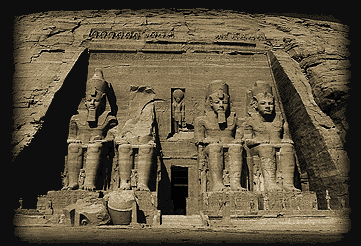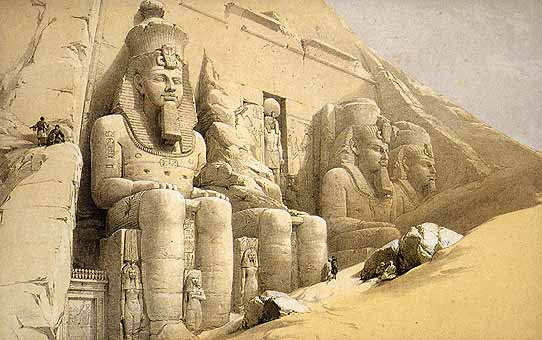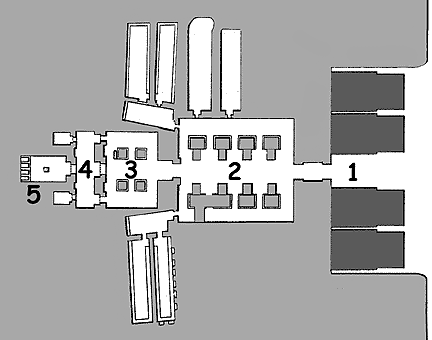|
Carved
out of a mountainside, this site is one of the most dramatic
of all the temples built in Egypt. It Consists of two temples,
the smaller temple, dedicated to Hathor and Queen Nefertari,
has been visited by travellers for centuries. The Great Temple
has been hidden by sand for centuries, it was not rediscovered
until 1813 by Jean Louis Burckhardt (a Swiss explorer), the first
to enter the temple in modern times was Giovanni Belzoni on 1
August 1817.
Four colossal statues
of Ramesses II wearing the double crown of Upper and Lower Egypt,
sit either side of the central doorway. The statues of Ramesses
II (over 65 feet tall) dwarf the other statues found at the temple
- above the doorway is Re-Herakhty, the others stand by the legs
of the seated statues: Maat, and the more important members of
the Royal family which are in groups of three:
|
Princess
Nebettawi
Princess Iset-Nofret
II
Princess Bintanath
|
Dowager Queen Tuya
Prince Amenhirkhepshef
Queen Nefertari
|
Queen Nefertari
Prince Ramesses
Princess Baketmut
|
Princess Meritamen
Princess Nefertari II
Dowager Queen Tuya
|
Surrounding the entrance
doorway to the temple are Ramesses II's cartouches, figures of
gods and scenes of Ramesses II before Amun-Re, Mut, Re and Werthekau.
Above the doorway is a figure of Re with a jackal headed staff
(User) and a figure of Maat, above these figures are 22 baboons.
|










